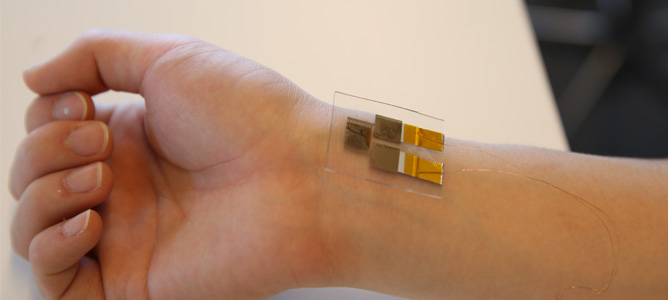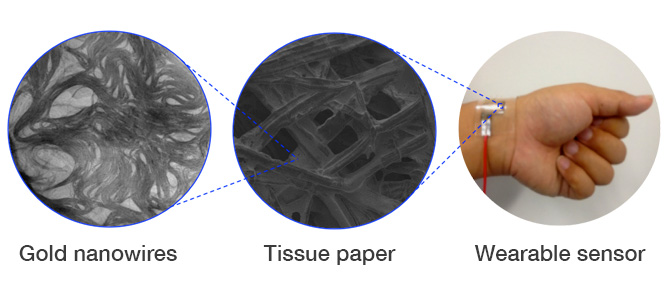A spotlight on electronic skins


Flexible electronics and lightweight pressure sensing devices are expanding the boundaries of technology into the fields of soft robotics, electronic skins and flexible displays. Current rigid circuit board technologies are limited in their applications, particularly with regards to medical devices and bionics. MCN Technology Fellow, Associate Professor Wenlong Cheng from Monash University, has been leading a team in the development of stretchable, elastomeric conductors for use in pressure sensing.
The focus of this project is the creation of pressure sensors which enable portable pulse and heart rate monitoring, as well as body movement sensing and are hoped to ultimately lead to electronic skin as the future of medical devices.
Flexible electronics have been the focus of much research attention recently, with work involving various nanomaterials, nanowires, carbon nanotubes, nanoparticles and grapheme being undertaken. Most of these are based on force-induced changes in capacitance or piezo-electricity, while Associate Professor Cheng’s group has been creating sensors based on resistive pressure. The advantage of this approach is the simplicity of the device fabrication as well as the relatively low amount of energy required to operate the device.
Utilising the facilities at MCN, his team has developed a simple, yet efficient, low-cost nanotechnological approach to integrating ultrathin gold nanowires into tissue paper to create a flexible sensor. The gold nanowires are just 2nm thick, yet tens of microns long and are both mechanically flexible and robust. Once nanowires have been soaked into tissue paper, it is then sandwiched between two thin layers of PDMS - one blank and the other patterned with an interdigitated electrode array - and attached to wiring to create a wearable sensor that can provide readings of blood pressure, heart rate and body movement. Such sensors are so sensitive, that tiny forces from blood pulses and acoustic vibrational forces can be accurately detected. What’s more, these devices are robust and can be fabricated in large quantities at low cost using scalable wet chemistry processing steps.
This development of soft electronics holds huge potential for portable health monitoring devices. Associate Professor Cheng will be looking at the commercial development of this project next.
Associte Professor Cheng can be heard discussing these sensors on the BBC radio program, Click. The interview starts approximately 6 minutes into the show.
You can read more about this project in the Nature Communications Paper, published in February 2014.


